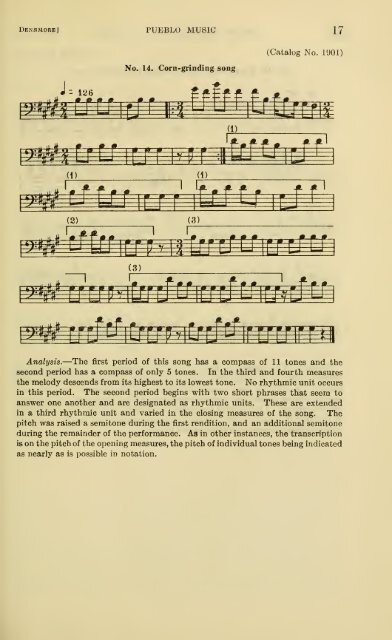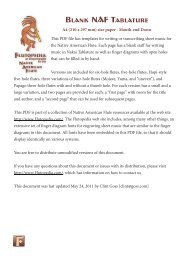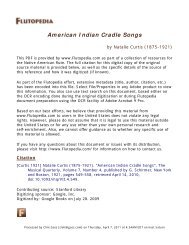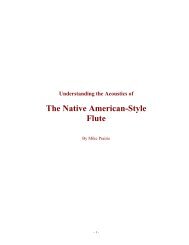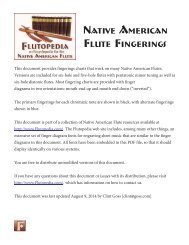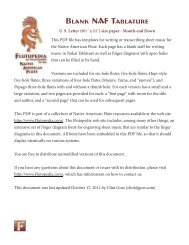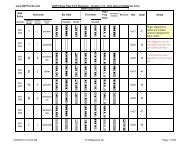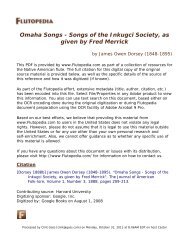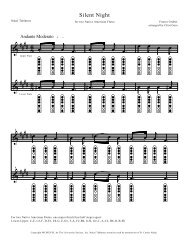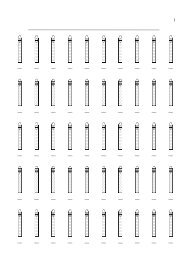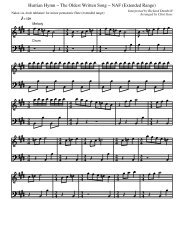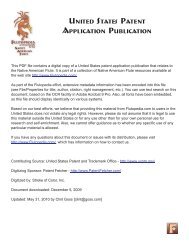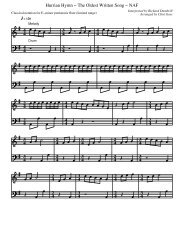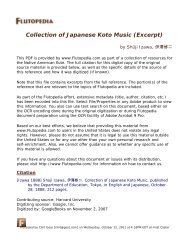Music of Acoma, Isleta, Cochiti, and Zuñi Pueblos - Flutopedia.com
Music of Acoma, Isleta, Cochiti, and Zuñi Pueblos - Flutopedia.com
Music of Acoma, Isleta, Cochiti, and Zuñi Pueblos - Flutopedia.com
You also want an ePaper? Increase the reach of your titles
YUMPU automatically turns print PDFs into web optimized ePapers that Google loves.
DensmoreJ<br />
PUEBLO MUSIC<br />
17<br />
(Catalog No. 1901)<br />
No. 14.<br />
Corn-grinding song<br />
(1)<br />
')--»^i'i Lr LS feffite^<br />
m tLJL<br />
(1) (1)<br />
nh^Lftjri^i ifrffj i^ff ;<br />
(2) (3)<br />
i):$ij c_f [<br />
If r ir r P<br />
-<br />
1<br />
slYrTTtir<br />
irr r/ ^-<br />
(3)<br />
'>¥f CJILT^ w:m=m m-m.<br />
rrm<br />
^^fe£<br />
«**: ILK3C<br />
3<br />
^i<br />
Cj'cj'<br />
P Htrd'^'trtrrf irr^ ii<br />
Analysis.—The first period <strong>of</strong> this song has a <strong>com</strong>pass <strong>of</strong> 11 tones <strong>and</strong> the<br />
second period has a <strong>com</strong>pass <strong>of</strong> only 5 tones. In the third <strong>and</strong> fourth measures<br />
the melody descends from its highest to its lowest tone. No rhythmic unit occurs<br />
in this period. The second period begins with two short phrases that seem to<br />
answer one another <strong>and</strong> are designated as rhythmic units. These are extended<br />
in a third rhythmic unit <strong>and</strong> varied in the closing measures <strong>of</strong> the song. The<br />
pitch was raised a semitone during the first rendition, <strong>and</strong> an additional semitone<br />
during the remainder <strong>of</strong> the performance. As in other instances, the transcription<br />
is on the pitch <strong>of</strong> the opening measures, the pitch <strong>of</strong> individual tones being indicated<br />
as nearly as is possible in notation.


